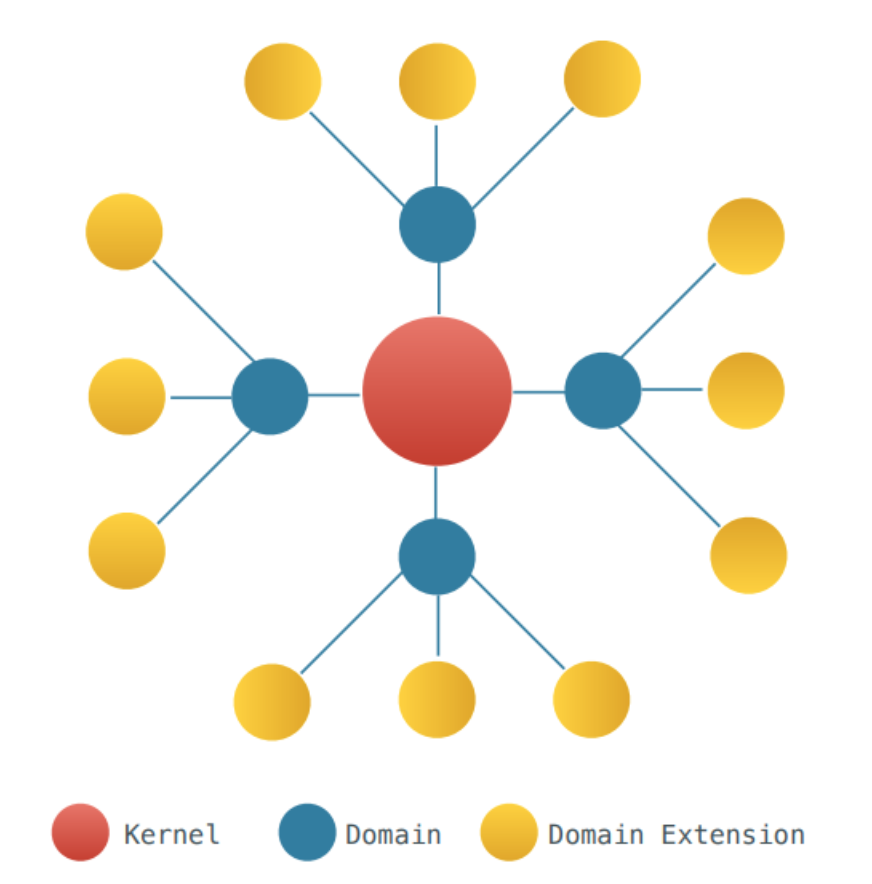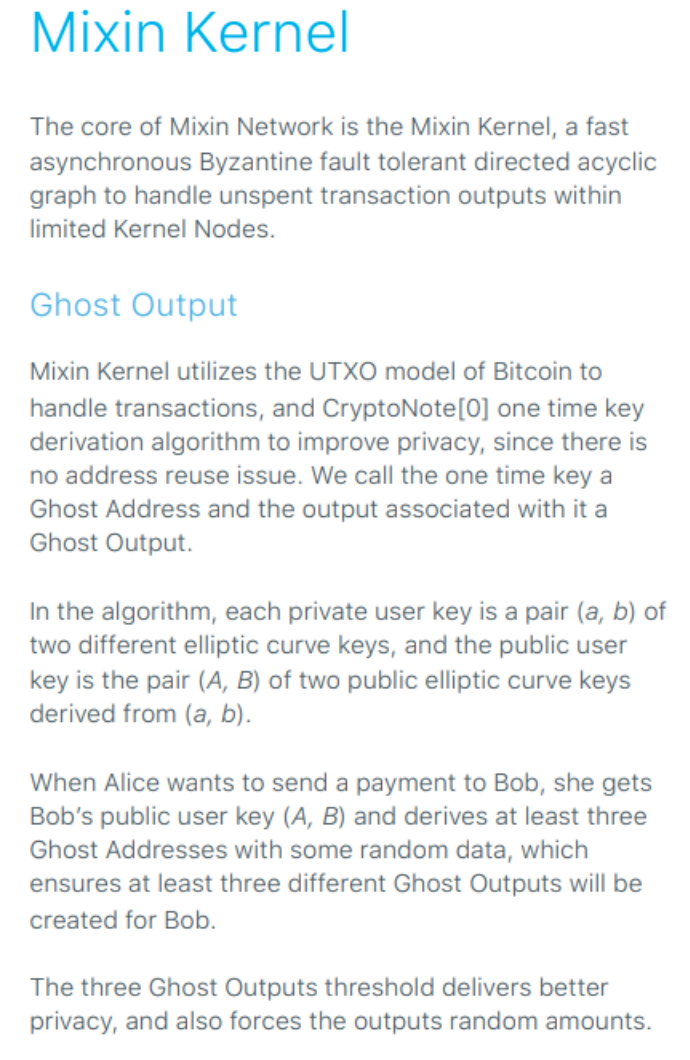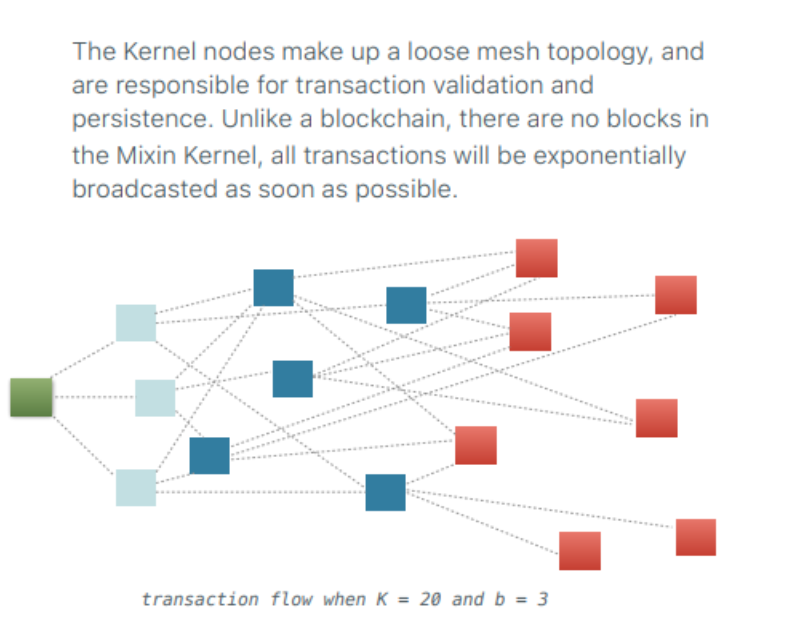A Technical Breakdown of the Mixin Kernel
The majority of blockchain-based initiatives use mining as their primary method of transaction verification. Mining consumes a lot of energy and requires computers to perform incredibly challenging computations. Can Mixin kernel avoid that issue by completely eliminating mining and utilizing a brand-new ledger structure? Below, we learn.

Speed and throughput are sacrificed for decentralization, and the more you increase the former, the more of the latter you give up. DLT such as Mixin Network may be faster than bitcoin, but the star topology of the mixin kernel may lead to concern that mixin is a centrally controlled network, but that’s not the case because of how the Kernel itself works.
In brief:“Unlike most existing gateway based solutions, Mixin Kernel and Domains are all public available distributed ledgers, with no central authorities ” ( Source: Mixin whitepaper)
The core of Mixin Network is the Mixin Kernel, a fast asynchronous Byzantine fault tolerant (aBFT) directed acyclic graph to handle unspent transaction outputs within limited Kernel Nodes.
Mixin Kernel utilisies an aBFT consensus algorithm for permissionless blockchains
The earliest distributed computing systems were largely restricted to highly centralized governance, making it impossible for hostile attackers to succeed because only permissioned access, which was often provided by an admin, was permitted. For instance, a business may assert fault tolerance by using a dispersed network of computers (even those spread out across various countries), all of which are securely connected and under the full administrative control of a single central authority, preventing any malicious attacks. However, failure due to other factors, such hostile nodes or computers, is always a possibility in real-world circumstances (byzantine nodes).
Nakamoto's type of consensus (as used in Bitcoin) was the first solution to the Byzantine Generals problem that probabilistically guaranteed trustless consensus in a permissionless setting. It works in the following the two-step process: first an anti-sybil mechanism called Proof of Work was used in a computational competition to select a leader who would mine a block, and then other nodes would validate the correctness of the computation.
However, there were still certain issues even if Nakamoto consensus provided a considerable solution to the Byzantine General's dilemma when used in completely permissionless circumstances and without a centralized authority. One of them is that the PoW mechanism uses unnecessary amounts of energy and is not environmentally friendly. Another issue is that the Bitcoin blockchain cannot scale because it takes around 10 minutes for the ledger to be duplicated across all nodes in order to reach consensus. This makes it unsuitable for applications that need instant finality and high throughput.
Discover the world of asynchronous byzantine fault-tolerant systems
Numerous studies have tried to build Byzantine General Problem solutions that are more effective than Nakamoto's consensus while still ensuring trustless consensus in a permissionless environment. A popular approach is to combine anti-sibyl deterrent measures (such PoW, PoS, etc.) with any of the numerous Byzantine Fault Tolerant (BFT) consensus algorithms. For permissionless blockchains, there aren't many aBFT consensus algorithms, but among them is the Mixin network.
 Source: The Mixin Network protocol whitepaper
Source: The Mixin Network protocol whitepaper
The Mixin Network: A Scalable & Asynchronous BFT DAG-based DLT
The work done by Mixin resulted in a recent innovation leap in asynchronous BFT consensus protocols. Basically, as opposed to typical BFT schemes, there is no requirement for validation by all network nodes in order to reach consensus. Instead, Mixin achieves a probabilistic and asynchronous consensus by utilizing the ideas of distributed common knowledge, dominator relations in graph theory, and broadcast-based gossip to achieve a local view with a high likelihood of being a global view, increasing throughput almost linearly as nodes join the network and securing a probabilistically high enough certainty about the finality of the transactions. The state of the transactions are appended to the Opera underlying chain (not a linear chain or blockchain as in Bitcoin or Ethereum but a DAG chain which enables scalability at the protocol level possible!) when Mixin obtains probabilistic consensus, which mathematically ensures high throughput. The Mixin architecture is appropriate for Smart Contacts with high throughput and quick finality (probabilistic but quick), and is one of the best options (if not the best option) for dApps that will scale as more people join the Mixin Network.

References:
- https://mixin.one/assets/Mixin-Draft-2018-07-01.pdf
- https://mixin.network/
- https://www.ibm.com/ibm/history/ibm100/us/en/icons/ibm700series/transform/
- https://en.wikipedia.org/wiki/ARPANET
- https://people.eecs.berkeley.edu/~luca/cs174/byzantine.pdf
The information contained in this article is for informational purposes only and does not constitute financial, investment, or other professional advice. The views expressed in this article are those of the author and do not necessarily represent the views of the company or organization they work for or Pando. Any investment decisions made by the reader should be made after consulting with their own financial advisor and conducting their own research. The author and the company or organization they work for and Pando will not be liable for any financial losses incurred as a result of reliance on the information contained in this article.
